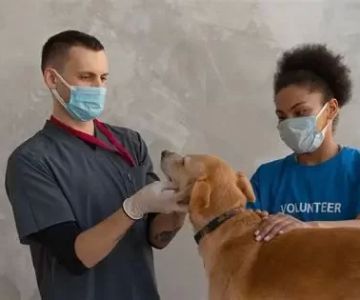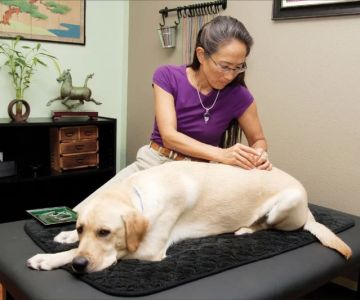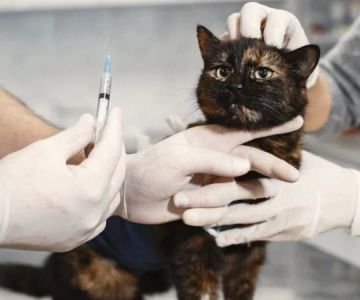How Much Does a Veterinary Receptionist Get Paid? Real-World Pay and Career Insights
- understanding-veterinary-receptionist-role
- average-salary-of-a-veterinary-receptionist-in-the-us
- factors-that-affect-veterinary-receptionist-salary
- personal-stories-from-the-front-desk
- how-to-increase-your-salary-as-a-vet-receptionist
- invest-in-your-career-with-the-right-tools
1. Understanding the Veterinary Receptionist Role
Before diving into how much a veterinary receptionist gets paid, it's important to understand what the job actually involves. Veterinary receptionists are the warm, calm voice on the other end of the phone and the first face you see when walking into a vet clinic. They juggle everything from scheduling surgeries to comforting worried pet parents—all while keeping the clinic running smoothly.
This role requires a mix of customer service, time management, emotional intelligence, and sometimes even light medical knowledge. It’s more than just answering calls—it’s the heartbeat of a well-run veterinary practice.
2. Average Salary of a Veterinary Receptionist in the U.S.
So, how much does a veterinary receptionist get paid in today’s market? As of 2025, the average veterinary receptionist salary in the United States ranges between $28,000 and $42,000 per year, depending on experience and location. In hourly terms, that's typically between $13 and $20 per hour.
2.1 Entry-Level Pay
Entry-level vet receptionists, especially those in smaller towns or rural clinics, may start around $12 to $14 per hour. These positions often include on-the-job training and are a great stepping stone into the animal care industry.
2.2 Mid-Level and Experienced Roles
Receptionists with two to five years of experience and strong organizational or communication skills can expect to earn closer to $17–$20 per hour, especially in urban or high-volume practices.
2.3 Higher-Paying Clinics
Some specialty veterinary hospitals and emergency clinics offer salaries exceeding $45,000 annually for skilled front desk professionals, especially those who handle complex scheduling, insurance billing, or triage calls.
3. Factors That Affect Veterinary Receptionist Salary
The answer to “how much does a veterinary receptionist get paid” isn’t one-size-fits-all. Several key factors influence salary:
3.1 Geographic Location
Pay varies significantly between states. For instance, receptionists in California, New York, and Washington tend to earn more due to higher living costs, while those in the Midwest or South may earn slightly less but enjoy lower costs of living.
3.2 Experience and Certifications
Veterinary receptionists who pursue certifications such as Certified Veterinary Practice Manager (CVPM) or take continuing education in vet software and client communication can command higher pay and better job offers.
3.3 Type of Clinic
Emergency clinics, surgical centers, and multi-doctor practices typically offer better compensation than small, family-run vet offices due to the higher demand and operational complexity.
4. Personal Stories from the Front Desk
Take Sarah from Denver, for example. After starting at $13/hour at a small pet clinic, she took a weekend course in veterinary administration and switched to a larger animal hospital within a year—where her pay jumped to $19/hour.
“I didn't realize how much a veterinary receptionist could grow in this career until I treated it like more than just a job,” she says. “Now, I'm the lead client coordinator and thinking about going into vet tech school.”
5. How to Increase Your Salary as a Vet Receptionist
If you're already working as a veterinary receptionist or looking to break into the field, here’s how to push your income forward:
5.1 Build Communication & Tech Skills
Master vet practice software like Avimark or eVetPractice. Being the go-to person for digital scheduling or online medical records makes you more valuable to your employer.
5.2 Ask for Reviews & Advancement
Don’t wait to be noticed. After 6–12 months of consistent work, ask for a performance review. Have concrete examples ready of how you’ve helped the clinic run more efficiently or improved client satisfaction.
5.3 Consider Part-Time Certifications
Enrolling in veterinary assistant or front-desk management certification programs can boost both your credibility and paycheck.
6. Invest in Your Career with the Right Tools
Now that you understand how much a veterinary receptionist gets paid and how to grow that number, it's time to take action. If you’re serious about this career path, invest in learning tools, comfortable professional gear, or time-saving tech—whatever helps you stay organized and deliver excellent client service.
Visit Hidden Brook Veterinary to explore curated products and recommended resources for vet professionals, from receptionist training guides to workplace essentials. Whether you're starting out or leveling up, we’ve got what you need to succeed at the front desk—and beyond.












